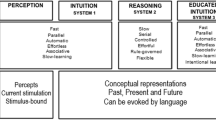Abstract
This article is devoted to methodological issues of decision-making in certain sports in the process of sports training of athletes. The interrelations between various components of athletes’ sports training are revealed and presented in the form of cognitive schemes. Approaches to the description of the process of sports training are formed, summarizing the experience of coaches and sports scientists. On this basis, conceptual models are built that include factors that influence decision-making, such as training conditions and effects. The definition of training effects observed in sports, such as delayed, residual, saturation, plateau, super-compensation, rebound, tolerance, overtraining, is given. A brief overview of mathematical models describing these effects and how they are implemented in the architecture of decision support systems (DSS) is given. The definition of the so-called “paradox of variability of physical activity” is given, when a more variable and diverse training program leads to better results than a monotonous one. The algorithm of decision-making by trainers and the features of using DSS in practice are described in detail.
Access this chapter
Tax calculation will be finalised at checkout
Purchases are for personal use only
Similar content being viewed by others
References
HSE University, Research Departments, Institute for Statistical Studies and Economics of Knowledge. https://issek.hse.ru/news/484743102.html?fbclid=IwAR2cc_n3G7BpukteWqNWC4XQk9XlUeP0YtNvLyQxRxi09k4kSJBhASHzanM. Accessed 27 July 2021
Calof, J., Meissner, D., Vishnevskiy, K.: Corporate foresight for strategic innovation management: the case of a Russian service company. Foresight 22(1), 14–36 (2020)
Mouratidis, A., Vansteenkiste, M., Lens, W., Sideridis, G.: The motivating role of positive feedback in sport and physical education: evidence for a motivational model. J. Sport Exerc. Psychol. 30(2), 240–268 (2008)
Van Dinh, N., Thao, N.X.: Some measures of picture fuzzy sets and their application in multi-attribute decision making. Int. J. Math. Sci. Comput. 4(3), 23–41 (2018)
Barabash, O., Shevchenko, G., Dakhno, N., Neshcheret, O., Musienko, A.: Information technology of targeting: optimization of decision making process in a competitive environment. Int. J. Intell. Syst. Appl. 9(12), 1–7 (2017)
Faradian, A., Manjafarashvili, T., Ivanauri, N.: Designing a decision making support information system for the operational control of industrial technological processes. Int. J. Inf. Technol. Comput. Sci. 7(9), 1–7 (2015)
Timme, E.A., Dayal, A.A., Kukushkin, Y.A.: Training plans optimization using approximation and visualization of Pareto frontier. In: Lames, M., Danilov, A., Timme, E., Vassilevski, Y. (eds.) Proceedings of the 12th International Symposium on Computer Science in Sport (IACSS 2019), pp. 69–76. Springer International Publishing, Cham (2020). https://doi.org/10.1007/978-3-030-35048-2_9
Borresen, J., Lambert, M.I.: The quantification of training load, the training response and the effect on performance. Sports Med. 39(9), 779–795 (2009)
Banister, E., et al.: A systems model of training for athletic performance. Aust. J. Sports Med. 7(3), 57–61 (1975)
Busso, T.: Variable dose-response relationship between exercise training and performance. Med. Sci. Sports Exerc. 35(7), 1188–1195 (2003)
Clarke, D.C., Skiba, P.F.: Rationale and resources for teaching the mathematical modeling of athletic training and performance. Adv. Physiol. Educ. 37(2), 134–152 (2013)
Turner, J.D., et al.: A nonlinear model for the characterization and optimization of athletic training and performance. Biomed. Hum. Kinet. 9(1), 82–93 (2017)
Karabutov, N.: System with distributed lag: adaptive identification and prediction. Int. J. Intell. Syst. Appl. 8(3), 1–7 (2016)
Author information
Authors and Affiliations
Editor information
Editors and Affiliations
Rights and permissions
Copyright information
© 2022 The Author(s), under exclusive license to Springer Nature Switzerland AG
About this paper
Cite this paper
Timme, E.A. (2022). Features of the Architecture and Models of Decision Support Systems in Individual Sports. In: Hu, Z., Petoukhov, S., He, M. (eds) Advances in Artificial Systems for Medicine and Education V. AIMEE 2021. Lecture Notes on Data Engineering and Communications Technologies, vol 107 . Springer, Cham. https://doi.org/10.1007/978-3-030-92537-6_49
Download citation
DOI: https://doi.org/10.1007/978-3-030-92537-6_49
Published:
Publisher Name: Springer, Cham
Print ISBN: 978-3-030-92536-9
Online ISBN: 978-3-030-92537-6
eBook Packages: Intelligent Technologies and RoboticsIntelligent Technologies and Robotics (R0)




